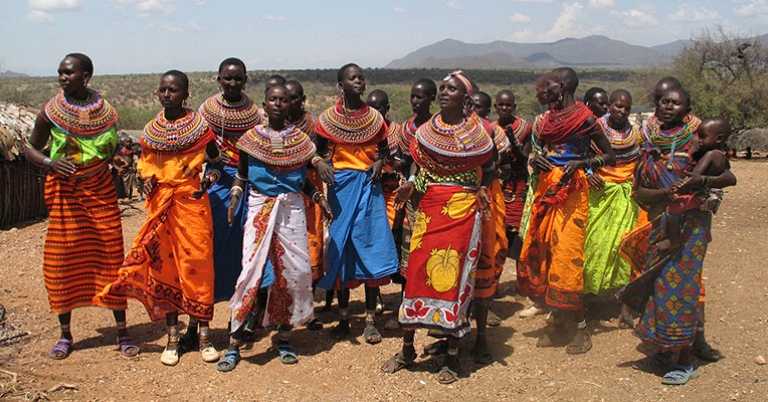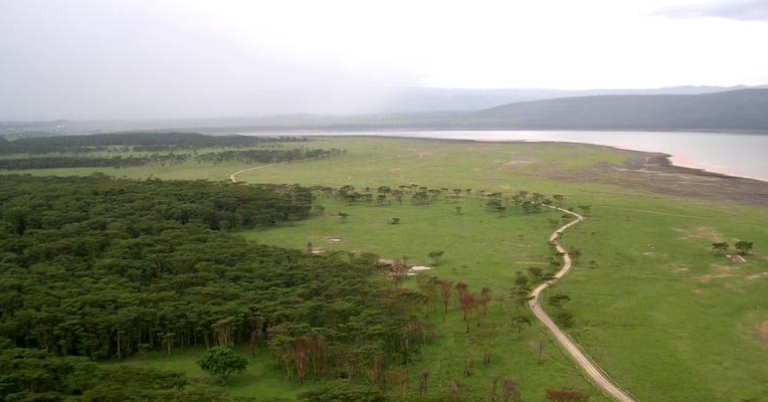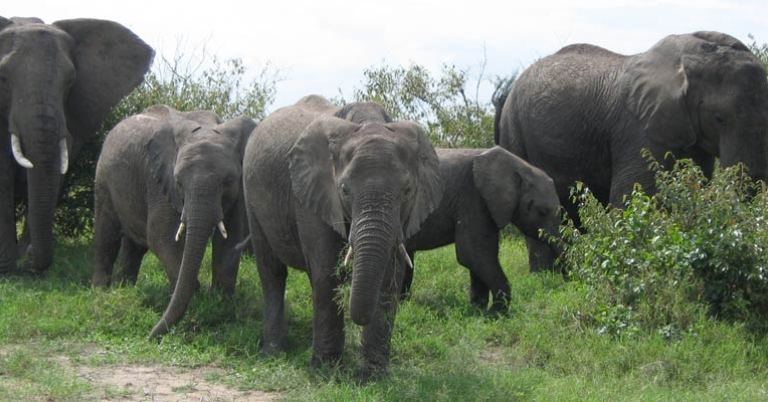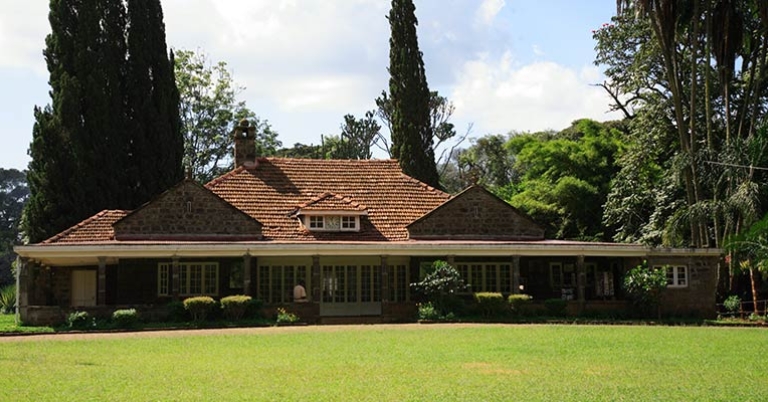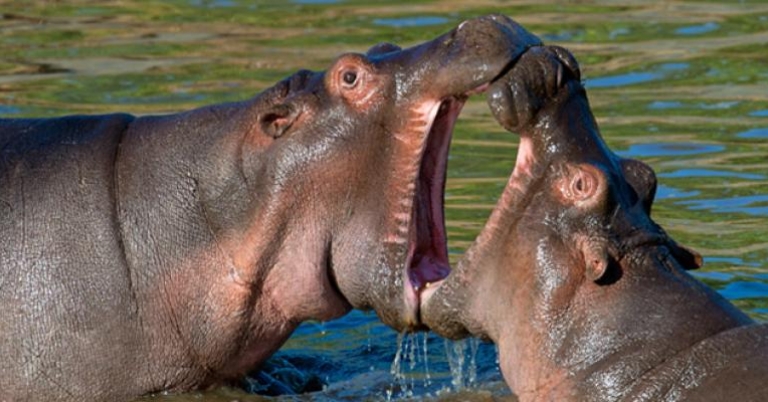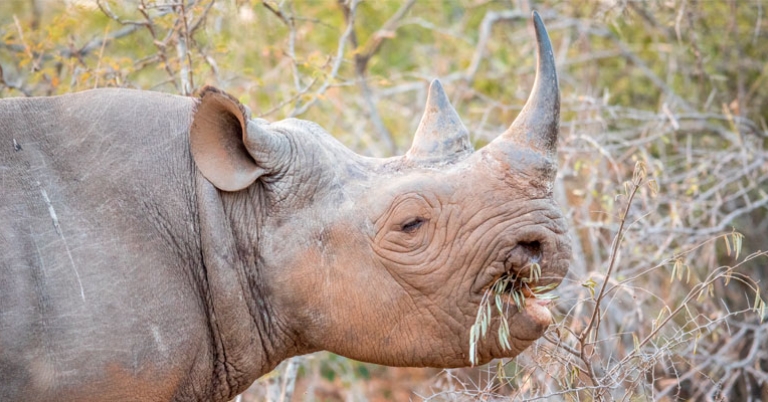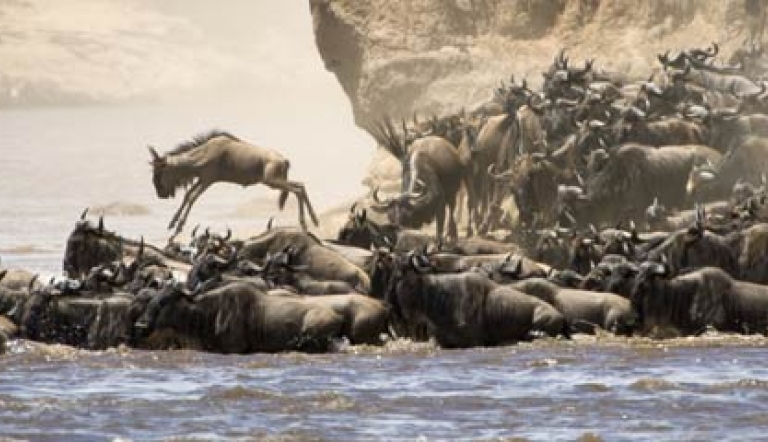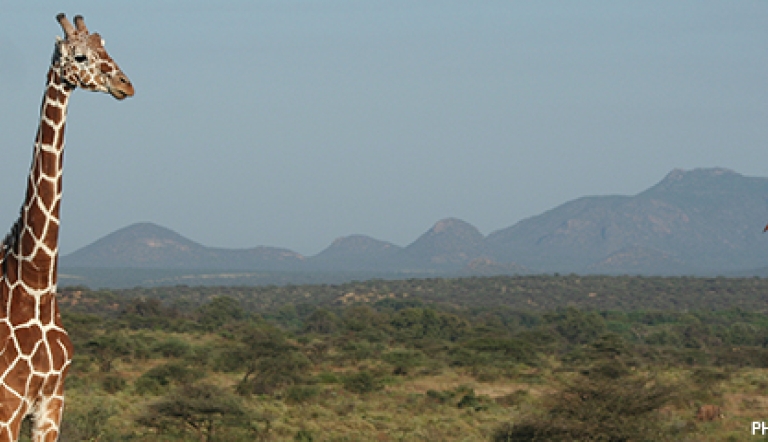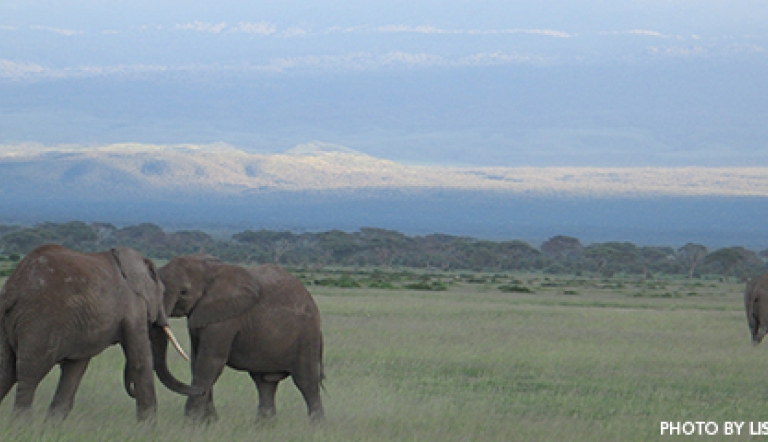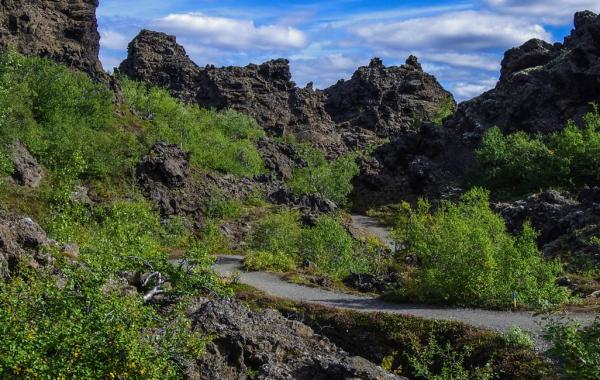Majestic Kenya: Wildlife and Conservation on Safari
About this trip
Astride the equator in East Africa, Kenya is home to a host of natural wonders. On this 15-day expedition, go up close with the wildlife for which Kenya is famous, and gain a deeper understanding of its conservation story — past, present, and future. Explore the unique features of the Great Rift Valley while seeking out iconic safari species on wildlife viewing drives and nature walks. Learn about initiatives to protect and rehabilitate endangered elephant and rhino populations, and even witness an elephant feeding. Cultural interactions with local Maasai communities illuminate how land and people intertwine. Your journey is bookended with experiences at Amboseli National Park and Maasai Mara Reserve, offering world-class wildlife viewing on safari — plus an unforgettable stay in an eco-friendly tented camp.
Highlights:
- Learn about the Great Migration and the life cycles of the Serengeti-Maasai Mara ecosystem in search of target species including lions, cheetahs, and leopards.
- Discover the conservation challenges faced by endangered wildlife as you visit pioneering projects such as the Sheldrick Wildlife Trust Elephant Nursery, the Giraffe Centre, and the Sweetwaters Chimpanzee Sanctuary.
- Observe iconic safari species on wildlife viewing drives in Amboseli National Park, a UNESCO Biosphere Reserve, set against the magnificent backdrop of Mount Kilimanjaro on the horizon.
- Admire sweeping views of the Great Rift Valley from lookout points in and around Lake Nakuru National Park.
- Enrich your Kenyan journey with cultural interactions at a Maasai village and during visits to local cooperatives.
Activity Level 3: Moderate
Participants should be able to ascend or descend 60 stairs consecutively, plus walk for at least 3 hours over some steep slopes, uneven, and potentially slippery surfaces without difficulty. Physical activities typically last for 3 or more hours at a time.
Land Cost
$10,150 - Jan 1, 2024 - Dec 31, 2026
$11,695 - Jan 1 - Dec 31, 2027
Book 10 travelers and 1 group
leader travels for free
Prices valid July 1st to Oct 31st. If booked Jan 1st to March 31st, there is a $1300 p/p discount. If booked Apr 1st - June 30th, there is a $1400 p/p discount. If booked Nov 1st - Dec 15th, there is an $900 p/p discount.
What makes us different
Rich content
Custom-tailored Trips
Wildlife up-close
Support conservation
Expert guides
Flight arrangements
Daily Itinerary
Print ItineraryDepart
Day 1Nairobi
Day 2Nairobi
Day 3Amboseli National Park
Day 4Amboseli National Park
Day 5Amboseli National Park
Day 6Ol Pejeta Conservancy
Day 7Ol Pejeta Conservancy
Day 8Lake Nakuru National Park
Day 9Lake Nakuru National Park
Day 10Maasai Mara
Day 11Maasai Mara
Day 12Maasai Mara
Day 13Departure
Day 14In flight
Day 15Pricing
Print PricingLand Cost
$10,150 - Jan 1, 2024 - Dec 31, 2026
$11,695 - Jan 1 - Dec 31, 2027
Book 10 travelers and 1 group
leader travels for free
Prices valid July 1st to Oct 31st. If booked Jan 1st to March 31st, there is a $1300 p/p discount. If booked Apr 1st - June 30th, there is a $1400 p/p discount. If booked Nov 1st - Dec 15th, there is an $900 p/p discount.
What's Included
- Accommodations with private bathrooms
- Activities and meals as mentioned in itinerary
- Arrival and departure transfers based on individual flight schedules
- Water refill station during transfers
- Carbon Offset
- Full time guide for the duration of your program
- Private transportation and driver for the duration of the program
What's Not Included
- International airfare
- Items of personal nature
- Tips
- Travel Insurance
Pricing Details
Prices are valid for travel from Jan 1, 2024 - Dec 31, 2026. Holiday surcharges may apply.
Travel Info
Print Travel InfoEntry & Exit Requirements
U.S. citizens must have a valid passport to enter Kenya. Passports must be valid for at least six months after the date of entry and have at least two blank pages available.
An Electronic Travel Authorization (eTA) is also required for entry. The eTA application and payment must be submitted online prior to travel; the eTA cannot be obtained on arrival in Nairobi. The stated processing time is 3 business days but may take longer; for this reason, it is recommend that you apply at least two weeks prior to travel to allow for possible delays. Once issued, the eTA is valid for 90 days. The cost for a single-entry eTA is USD $30 per person plus processing fees. This fee is subject to change at any time and without notice. Visit https://www.etakenya.go.ke/en to complete the eTA application. Once your eTA has been approved, you will receive a QR code to show upon arrival in the country. We recommend printing a backup copy of the QR code in addition to storing it on your electronic device.
If you are not traveling with a U.S. passport, please check with the Kenyan Embassy for the requirements based on your nationality.
Health Information
IMMUNIZATIONS
The Centers for Disease Control recommends that all travelers be up to date on routine vaccinations such as measles-mumps-rubella (MMR) vaccine, diphtheria-pertussis-tetanus vaccine, varicella (chicken pox) vaccine, and your yearly flu shot before every trip.
There are no vaccinations required for entry into Kenya (unless you are arriving from a country where yellow fever is a risk, in which case you must present proof of yellow fever vaccination or risk being denied entry into the country).
Though not required for entry, the CDC recommends yellow fever vaccination for most travelers to Kenya. The CDC also recommends inoculation against hepatitis A, hepatitis B, and typhoid for most unvaccinated travelers.
Meningitis can be a risk during the dry season (December-July). If you are traveling during these months, your physician may recommend a meningitis vaccine.
Please consult your physician for additional information and recommendations based on your individual circumstances.
MALARIA
The CDC warns that travelers to Kenya may be at risk for exposure to malaria. Malaria is caused by a parasite found in Anopheles mosquitos, which are active from dusk until dawn. Prevention is twofold: the use of anti-malarial drugs and the prevention of insect bites. If you choose to use an anti-malarial drug, as recommended by the CDC, see your physician for a prescription.
To protect against mosquitos, the CDC recommends that you cover exposed skin with lightweight, long-sleeved shirts and pants, consider treating clothes with permethrin, and use an insect repellent containing an EPA-registered active ingredient like DEET, picaridin, or oil of lemon eucalyptus (OLE). Apply sunscreen first, followed by the repellent, ideally 20 minutes later.
Be careful when applying products containing DEET, as it can damage or dissolve certain synthetic fabrics as well as plastic, rubber, vinyl, or elastic materials, such as those used in camera equipment, phone cases, sunglasses, or watches. Additionally, some research suggests that when DEET and picaridin enter local waterways, they can be harmful to amphibians and other wildlife. When selecting a repellent, it is ultimately up to each traveler to weigh the risks and benefits of different options, keeping in mind both environmental factors and the importance of protecting against illness.
OTHER INSECT-BORNE ILLNESSES
In addition to yellow fever and malaria, the CDC warns that travelers may be at risk for other illnesses transmitted by mosquitos, ticks, or sand flies, such as dengue fever, chikungunya, African tick-bite fever, leishmaniasis, and others. Travelers are advised to protect themselves against insect bites using the measures noted above.
After spending time outdoors, especially in grassy or wooded areas, the CDC recommends showering and conducting a full-body check for ticks. If you find a tick attached to your skin, safely remove it as soon as possible.
Parasites & Bacteria
Avoid swimming or bathing in freshwater lakes or rivers. Some freshwater bodies contain disease-causing parasites or bacteria that may be contracted through contact with infected water.
CPAP Machines
Some safari lodges and tented camps in remote areas of Kenya supply electricity through generators or solar power, and shut off electrical power during part of the night in order to conserve energy. If you use a CPAP machine, please be prepared to bring a battery pack (and any necessary cables) to power your equipment when electricity is not available. The battery pack can be charged during the day in preparation for nighttime use. Please be aware that if you do not have a battery pack, some lodges may assess a fee to run electricity through the night.
WILDLIFE
Follow all instructions from your guides regarding wildlife. Animals may become aggressive to protect themselves, their young or their mates, or to guard a food supply. Do not make sudden movements either toward or away from them, as this may be interpreted as threatening or territorial. Avoid stray dogs, as they may carry rabies. In the unlikely event of being bitten or scratched by a dog or other mammal, clean the wound and control bleeding. Seek medical attention immediately.
SUN EXPOSURE
The effects of the sun can be damaging to the eyes and skin. Spending time outdoors exposes you to the sun’s harmful ultraviolet (UV) rays, even on cloudy days. To protect yourself from the sun, use a broad spectrum sunscreen of at least SPF 15, protect skin with clothing, wear a wide-brimmed hat and sunglasses, and drink plenty of fluids.
Respiratory Illness Protocols
Please review our Respiratory Illness Protocols page, which explains our policy and procedures if you or another traveler should develop symptoms of a respiratory illness during your trip. Your participation in a Holbrook Travel program indicates that you are in agreement with these protocols.
Resources
Print ResourcesPacking Recommendations
Everyone has personal preferences when it comes to packing; for this reason, the information below is offered as a general guide and not a definitive list. You know yourself best: Use your discretion and pack what you think will serve you, based on your personal preferences and specific itinerary.
You may find many of the items below in the New Headings Gear Store. Use code HolbrookGuest10 for a 10% discount on your purchase.
CLOTHING
Casual, comfortable clothing is suitable for most activities in Kenya. You may wish to bring a slightly nicer outfit or two if your itinerary includes dinners out or more formal activities.
Bring enough clothing suitable for the length of your program. If you prefer to pack light, note that many hotels offer laundry services (at additional cost). If you plan to hand-wash items, remember that humidity may delay drying time.
Pack clothing that can be worn in layers to adapt to weather changes throughout the day. Clothing that wicks away moisture and dries quickly is recommended.
Bring clothes in neutral or muted colors such as green, khaki, brown, or grey. We recommend that you avoid wearing bright colors or white as they can easily be spotted by animals. In addition, blue is particularly attractive to certain insects and should be avoided.
Army-style camouflage clothing is illegal in Kenya.
Locals tend to dress conservatively. Tank tops and shorts/skirts cut above the knee are typically not recommended in public.
- A combination of short-sleeved and long-sleeved shirts
- Shorts and/or skirts
- A combination of lightweight, quick-drying long pants and medium-weight pants or trousers
- Undergarments
- Sleepwear
- Light- to medium-weight jacket or sweater/sweatshirt – Evenings can be cold, especially in desert areas and during May-August
- Bathing suit – Some hotels have pools.
- Socks – Bring extra pairs.
- Shoes – Consider your specific itinerary when choosing footwear. For most programs, you’ll likely want at least one pair of comfortable, closed-toe walking or hiking shoes with thorn-proof soles, suitable for hikes and walking over cobblestones or other uneven terrain. Sturdier hiking boots may be appropriate for more active itineraries. In addition, many participants opt for a pair of sturdy sport-strap sandals (e.g. Keens, Tevas, or similar), plus a pair of casual flip-flops or sandals for around your hotel.
- Lightweight rain jacket, hooded poncho, and/or windbreaker
- Visor or wide-brimmed sun hat
- Bandana, scarf, or neck gaiter
Personal Toiletries
Pack toiletries based on your personal preferences and habits.
- Shampoo, conditioner, lotion, deodorant/antiperspirant , etc. – If possible, avoid strong fragrances if you are sensitive to insect bites and to be considerate of your fellow travelers.
- Soap and washcloth or a small, quick-drying microfiber towel – Washcloths are not standard in all hotels. If you normally use a washcloth, you may wish to bring one from home.
- Hairbrush, comb, hair ties, shower cap.
- Toothbrush and toothpaste
- Razor
- Ear plugs, especially if you are a light sleeper
- Personal hygiene products
- Insect repellent with DEET or picaridin (see note below about treating clothing with permethrin)
- Sunscreen and lip balm with SPF
- Aloe vera gel
- A travel pack of tissues – also useful as napkins or toilet paper if needed
In addition to your personal toiletries, it is useful to pack a small medical kit, which you can easily prepare. Helpful items might include: bandages, antihistamine, a pain reliever, motion sickness and/or altitude sickness medication (if you are prone to either), anti-diarrhea medicine, individually wrapped pre-moistened towelettes and/or hand sanitizer, antibiotic ointment, anti-fungal cream, moleskin for blisters, eye drops, tweezers, a mini sewing kit, and an extra pair of disposable contact lenses or eyeglasses if you wear them.
Days before you leave home, you may wish to consider spraying any clothing, socks, and shoes that will be worn in lowland, tropical sites with permethrin, an anti-parasite medication, to repel irritating pests and prevent the spread of disease. A recommended brand is Sawyer. Carefully read all instructions before use. Please note permethrin is highly toxic to cats and fish, and some aerosol products may be harmful to birds. Side effects may include minor itching, burning, or redness. You may want to use a laundry marker to label and keep track of which socks are permethrinized. Only one application per item is necessary; permethrin on treated clothes remains effective through several washings. Permethrin should NOT be applied directly to skin.
Miscellaneous
Remember to pack valuables such as your passport, cash/credit cards, and medications in your carry-on luggage.
- Passport and photocopies of all travel documentation
- Personal insurance card and travel insurance information
- Money – ATM/credit card, traveler's checks, and/or cash; small bills in good condition are recommended
- Prescription medicines (if applicable), with a copy of the prescription
- Yellow fever certificate
- Sunglasses with strap
- Small day pack for hikes and excursions
- Flashlight and/or head lamp
- Travel alarm clock or inexpensive waterproof wristwatch with alarm – Not all hotels provide alarm clocks.
- A pocket calculator or phone to assist with conversions and currency exchange
- Binoculars with lens cleaner
- Reusable water bottle
- Non-perishable snacks
- Pocket-knife or multipurpose tool - Pack in your checked luggage
- Zip-top style bags – useful for packing toiletries, sorting clothing, storing damp or muddy shoes, or as a dry bag for protecting electronics)
- Notepad or travel journal and pen
- Music or reading material for down time, long bus drives, or on the airplane, and a portable bright light to read by
- Collapsible walking stick with rubber tip
- A small quantity of laundry detergent if you’ll be washing clothing by hand
- Money belt
- Voltage converter and plug adapter
- Chargers for electronics
Note that Kenya has banned single-use plastics. Visitors are requested to avoid bringing plastic bags into the country. This includes garbage bags and grocery/shopping bags. Zip-top style bags specifically used to carry toiletries per TSA’s liquids rule are still permitted on the assumption that they will be reused on the return flight. Items purchased at the airport before boarding the aircraft should be removed from plastic bags. Please double-check your carry-on luggage before disembarking in Kenya; any plastic bags should be left on the plane to avoid delays and possibly fines.

Questions
For more information, contact us at 800-451-7111 or email travel@holbrooktravel.com.
